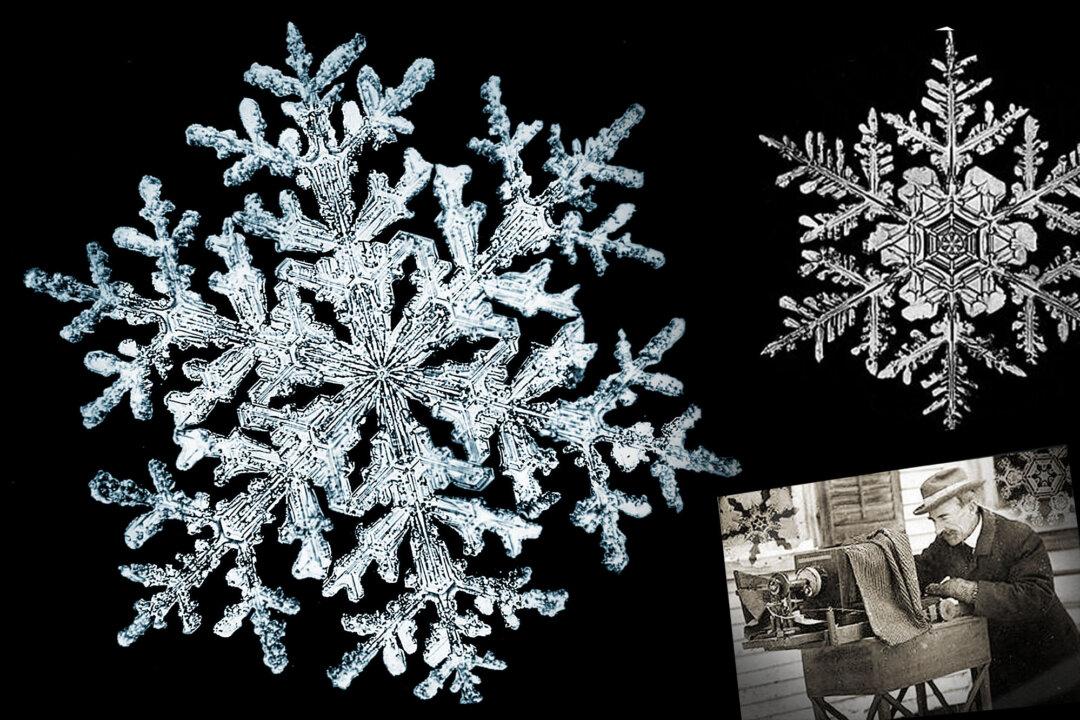The ice and snow are mostly gone, but winter still lingers in patches around Jericho, Vermont—where a world-famous poet scientist first coined the phrase “No two snowflakes are alike.”
He was a humble farmer. Land costed $3 an acre in 1880 when the 15-year-old Wilson Bentley first dreamed of attaching a new big bellows camera to the microscope his mother had given him. His hopes were to photograph the snowflakes he was observing through magnification in fascination, which would spark a life-long passion and legacy.






